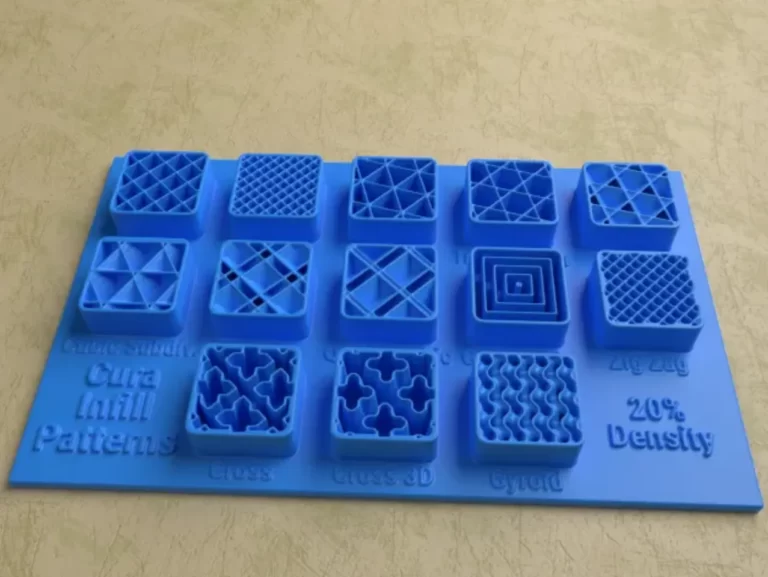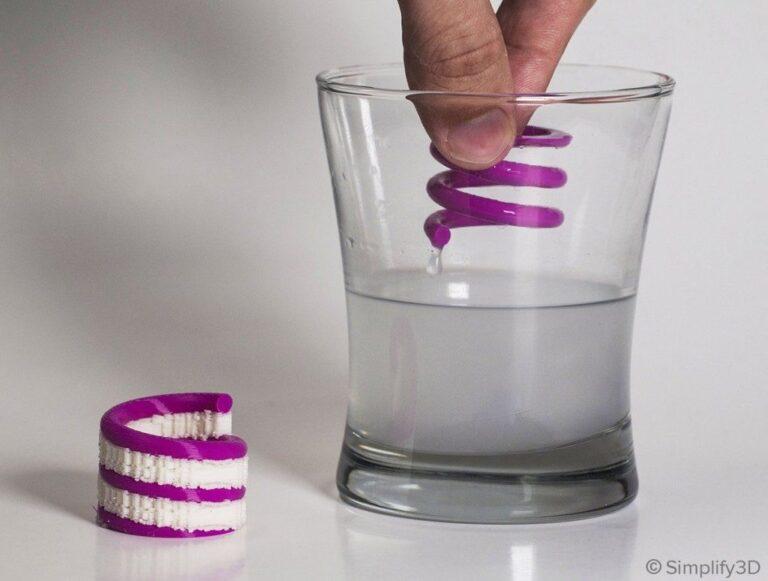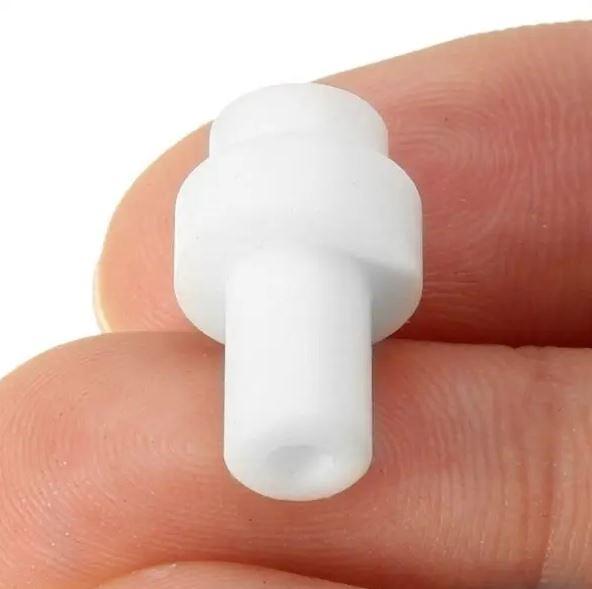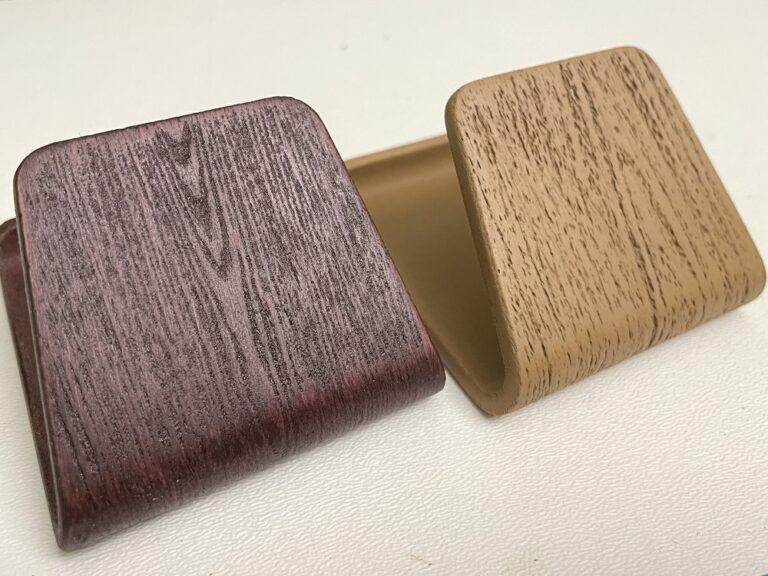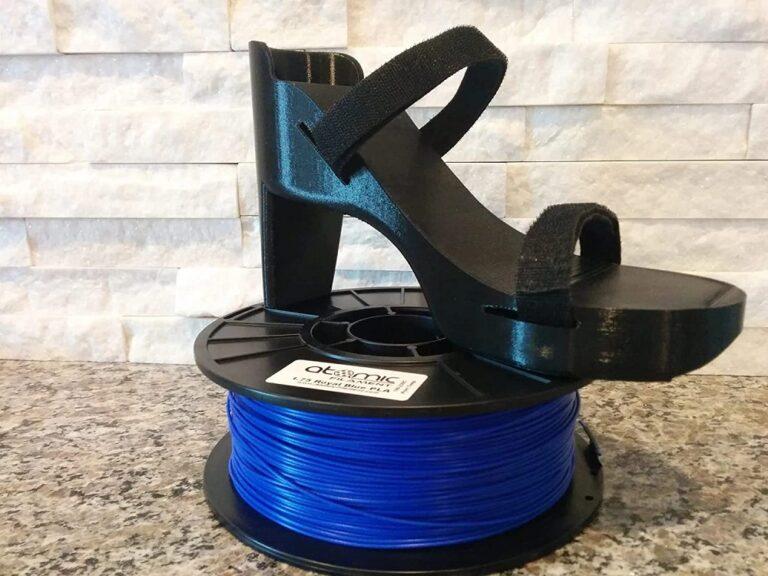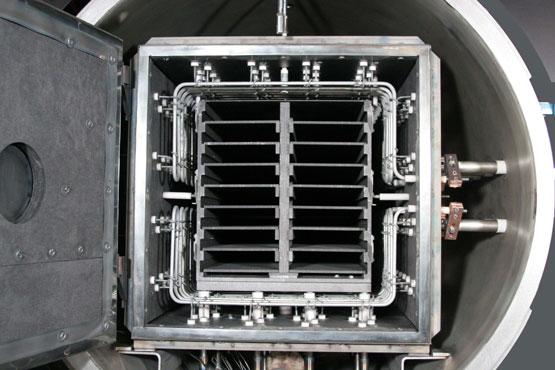The Ultimate Guide to Buying a Used 3D Printer: Tips and Tricks
Introduction
It’s crucial to do your research and get ready in advance when thinking about a used 3D printer. Various printers provide a variety of features that are tailored to particular demands. To prevent overspending, your study should also include budgeting. In addition to purchasing a fantastic instrument for creativity when you purchase a used 3D printer, you are also contributing to the reduction of waste.
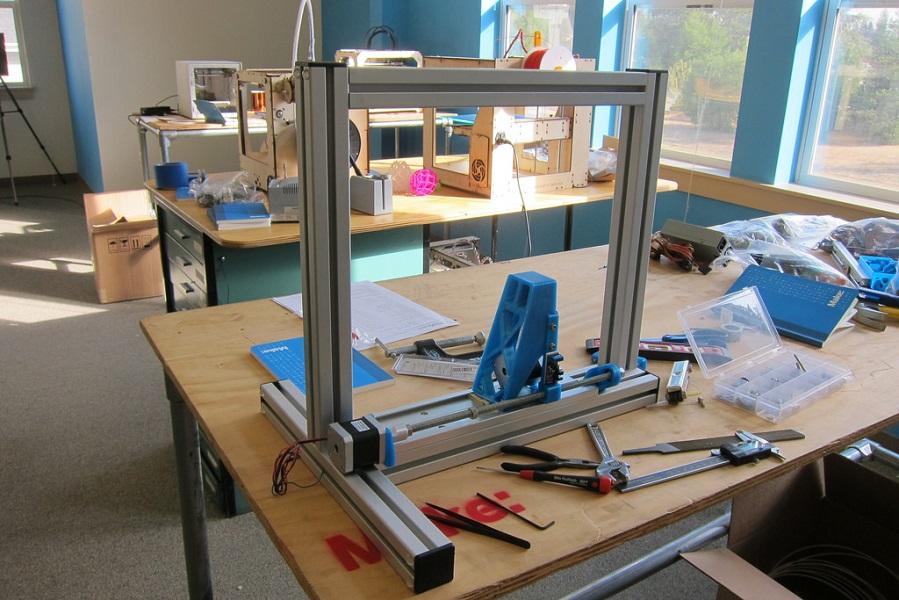
A brief explanation of what 3D printing is
The way we think about manufacturing has changed as a result of 3D printing, a revolutionary technology. By piling materials on top of one another, three-dimensional objects are created. These materials can range from plastics and metals to wood and even food. In industries like medicine, architecture, and fashion, 3D printing offers countless options for producing specialized ideas and prototypes.
A digital model or design developed with computer-aided design (CAD) software serves as the basis for the 3D printing process. The finished product is subsequently produced by the 3D printer by following a set of instructions created from the design. The printer applies layers of material, constructing the thing from the ground up.
If you want to start using 3D printing but don’t want to spend a fortune, used 3D printers are a great choice. While purchasing a used 3D printer might save you hundreds or even thousands of dollars, new ones can be pricey. Also, as 3D printers are a relatively new technology, many secondhand models are in excellent shape.
It’s crucial to take your wants and spending power into great consideration while looking for a used 3D printer. Various versions offer various characteristics, such as greater resolution or larger construction sizes. Certain printers work better with particular types of designs or materials. To make sure the printer is in good functioning order, it is also crucial to look into the printer’s history and carefully inspect it before purchase.
Advantages of buying a used 3D printer
A used 3D printer can be purchased with a number of benefits over a new one. For starters, it’s more reasonably priced, enabling you to save money without compromising quality. Also, you can purchase a high-quality printer at a lower cost because many used 3D printers are in outstanding shape. Also, purchasing a used 3D printer gives an existing tool a second chance at usage, reducing waste. We’ll delve deeper into these benefits in this section.
Cost savings compared to new models
Financial savings are one of the main benefits of purchasing a secondhand 3D printer. New models are frequently substantially more expensive than used ones; in some cases, the difference can be up to 50%. Without compromising on functionality or quality, you can save a lot of money. Furthermore, you can save a lot of money without sacrificing performance because a lot of secondhand 3D printers are still in fantastic shape. A used 3D printer can be obtained for a small portion of the cost of a new one, allowing you to afford a high-quality tool.
Many used printers are still in excellent condition
The condition of many used 3D printers is still great. This is due to the fact that 3D printing technology is still quite new and that many old models have not been utilized for a long time. Also, many users take exceptional care of their printers, keeping them in good condition. In light of this, purchasing a used 3D printer can be a terrific option to receive a high-quality tool without having to spend full price. You may frequently locate a used printer that is just as excellent as a new one, but at a considerably lesser price.
Access to upgrades and accessories that the previous owner no longer needs
The availability of upgrades and add-ons is another benefit of purchasing a secondhand 3D printer. You might be able to use any modifications or accessories that the previous owner has already spent money on. When compared to separately researching and buying these things, this can save you both money and time. Also, the prior owner may have upgraded the printer’s parts, such as the extruder or the hotend, which might enhance the printer’s performance. You can get these additions and extras without having to spend money on them by purchasing a used 3D printer.
Potential to learn from the previous owner’s knowledge and experience
Buying a used 3D printer also gives you the potential to learn from the previous owner’s knowledge and experience. They may have learned tips and tricks for using the printer, troubleshooting common issues, or even using specific software. By purchasing a used printer, you can potentially tap into this knowledge and benefit from their experience. Additionally, the previous owner may be able to provide you with helpful resources, such as user manuals or tutorials, that can help you get started with the printer. This can save you time and help you get the most out of your used 3D printer.
More sustainable choice compared to buying new
Purchasing a used 3D printer is more environmentally friendly than buying a new one. By purchasing a secondhand printer, you give it a second chance at life and prevent it from going to waste. This lessens waste and the environmental impact of making a new printer. Also, buying a used printer can save money by reducing the need for resources like energy and raw materials that are required in the production of new printers. The environment will benefit and your budget will thank you for choosing a secondhand 3D printer.
Research and Preparation
Research and preparation are essential when buying a used 3D printer. Start by determining your needs and budget. Research different models and their features. Look for local sellers or online marketplaces, but be cautious of scams. Inspect the printer carefully for wear and tear and ask the seller questions about its history. Consider negotiating the price and finalizing the purchase safely. Once you’ve purchased the printer, learn how to set it up and use it effectively. By doing your research and being diligent, you can find a high-quality used 3D printer that meets your needs and saves you money.
Determine your 3D printing needs
A crucial step in purchasing a used 3D printer is figuring out your printing requirements. Take into account the size of the objects you want to print, the materials you want to use, and the amount of detail you need. To decide which models best suit your needs, research several models and their attributes. Think about the projects you intend to work on and whether you require a printer with a high build volume or a low build volume. You may focus your search on a used printer and make sure that you get one that meets your particular demands by identifying your 3D printing needs.
Research different types of 3D printers and their features
Before purchasing a used 3D printer, it is essential to research the many types and characteristics of 3D printers. There are different kinds of printers, such as FDM, SLA, and SLS. Each type has pros and cons, including print quality and material suitability. Moreover, printers exist in various sizes and with various features, such as auto bed leveling and multiple extruders. You may find out which of these features you require and which models would perform best for your projects by researching them. You can purchase a used 3D printer with confidence if you thoroughly investigate the various models’ features.
Set a budget
When purchasing a used 3D printer, setting a budget is crucial. Assess your 3D printing demands and how much you can afford to spend. Although used printers are typically less expensive than new ones, costs can still differ greatly depending on the model and the printer’s state. Include any necessary repairs or upgrades in your budget along with their associated costs. Don’t overspend and be honest with yourself about what you can afford. You may focus your search and find a used 3D printer that suits your needs without going over budget by establishing a budget.
Where to Look for Used 3D Printers
Knowing where to look for used 3D printers is crucial when shopping. Online marketplaces such as eBay and Craigslist offer a wide selection of used printers. 3D printing forums and communities can also be a great resource for finding used printers. Additionally, local classified ads may have listings for used printers in your area. When looking for a used printer, be cautious of scams and ensure that the seller has a good reputation. By knowing where to look for used 3D printers, you can increase your chances of finding a high-quality printer at an affordable price.
Online marketplaces (eBay, Craigslist, etc.)
A variety of used 3D printers are available on websites like eBay and Craigslist. These platforms make it simple to select the printer that matches your needs by letting you narrow your search by location, price, and model. Be wary of cons, though, and make sure the seller has a solid reputation. Ask the vendor about the printer’s history and current condition after carefully reading the listing. Negotiate the price and take any shipping or handling costs into account. You may buy a used 3D printer for a fantastic price from the convenience of your home by shopping on internet marketplaces.
3D printing forums and communities
3D printing forums and communities are excellent resources for finding used 3D printers. These online communities allow users to buy and sell used printers, as well as share tips and advice on using and maintaining them. Be sure to read the forum’s rules and guidelines before posting or purchasing. Consider asking for recommendations or posting a “wanted” ad to get leads on available printers. As with any purchase, be cautious and verify the seller’s reputation. By tapping into 3D printing forums and communities, you can connect with other enthusiasts and find a high-quality used printer.
Local classified ads
Local classified ads can be a great resource for finding used 3D printers in your area. Check local newspapers and online classifieds for listings. You may find printers that are not available on larger marketplaces or forums. When responding to an ad, be sure to ask the seller questions about the printer’s condition and history. Consider meeting the seller in person to inspect the printer before purchasing. By checking local classified ads, you can potentially find a great deal on a used 3D printer without having to pay for shipping or wait for it to arrive.
What to Look for When Inspecting a Used 3D Printer
Prior to buying, it is essential to inspect a used 3D printer. Check for wear and tear indicators like cracks or scrapes. Print a test object or run a calibration test to verify the printer’s operation. Check the condition of the printer’s parts, including the extruder, hotend, and bed. Ask the vendor about the printer’s upkeep history, including any repairs or updates. Keep an eye out for any indications of tweaks or modifications that might have an impact on the printer’s functionality. You may avoid buying a secondhand 3D printer with unresolved problems and make sure you get a high-quality product that suits your demands by giving it a thorough inspection.
Check the overall condition of the printer
Checking the overall condition of the printer is important when buying a used 3D printer. Look for signs of wear and tear, such as scratches, cracks, or dents. Check the printer’s frame, bed, and components for any damage or signs of misuse. Look for any modifications or alterations that may affect the printer’s performance. Additionally, check the printer’s wiring and connections to ensure that they are intact and functional. By checking the overall condition of the printer, you can ensure that it is in good working order and avoid purchasing a printer with hidden issues.
Check for signs of wear and tear
Checking for signs of wear and tear is essential when inspecting a used 3D printer. Look for scratches, cracks, or dents on the printer’s frame, bed, and components. Check the printer’s belts, pulleys, and bearings for any signs of damage or wear. Additionally, look for any rust or corrosion on the printer’s metal components. These signs of wear and tear can indicate that the printer has been heavily used or has not been well-maintained. By checking for signs of wear and tear, you can get a better idea of the printer’s condition and determine whether it is worth purchasing.
Inspect the printer’s components (extruder, bed, etc.)
Inspecting the printer’s components is crucial when buying a used 3D printer. Check the extruder, hotend, and bed for signs of wear or damage. Make sure that the bed is level and that the extruder is properly calibrated. Check the printer’s belts, pulleys, and bearings for any damage or wear. Look for any clogs or jams in the extruder or hotend. Additionally, check the printer’s wiring and connections to ensure that they are intact and functional. By inspecting the printer’s components thoroughly, you can ensure that it is in good working order and avoid purchasing a printer with hidden issues.
Check the printer’s firmware and software
Checking the printer’s firmware and software is important when buying a used 3D printer. Check the version of the printer’s firmware and ensure that it is up-to-date. Consider downloading the latest version of the printer’s software and testing it out. Look for any signs of previous modifications or customizations to the firmware. Additionally, check that the printer’s software is compatible with your computer and any other devices you plan to use it with. By checking the printer’s firmware and software, you can ensure that it is fully functional and compatible with your needs.
Questions to Ask the Seller
Asking the seller questions is important when buying a used 3D printer. Ask about the printer’s history, including any repairs or upgrades. Inquire about the printer’s usage and how often it was used. Ask about any modifications or customizations made to the printer. Additionally, ask about the printer’s compatibility with different types of filaments and software. Consider asking for a demonstration of the printer’s functionality. By asking the seller questions, you can get a better understanding of the printer’s condition and determine whether it is worth purchasing.
Why are they selling the printer?
Asking why the seller is selling the printer is important when buying a used 3D printer. They may be selling the printer because they upgraded to a newer model or no longer have a need for it. Alternatively, they may be selling it because it has issues or defects. Asking why they are selling the printer can give you insight into its history and potential issues. Additionally, it can help you negotiate the price or ask for additional information. By asking why the seller is selling the printer, you can make a more informed decision and potentially avoid purchasing a printer with hidden issues.
How many hours has the printer been used?
Asking how many hours the printer has been used is important when buying a used 3D printer. The number of hours can give you an idea of the printer’s overall condition and potential issues. A printer with a high number of hours may have more wear and tear or require more maintenance. Additionally, it can help you determine the printer’s value and negotiate the price. Be sure to ask for an accurate estimate of the printer’s usage and consider the seller’s response when making your decision. By asking how many hours the printer has been used, you can make a more informed decision and potentially avoid purchasing a printer that has been heavily used or has hidden issues.
Has the printer undergone any repairs or upgrades?
Asking whether the printer has undergone any repairs or upgrades is important when buying a used 3D printer. Repairs and upgrades can affect the printer’s performance and overall value. Ask the seller about any repairs or upgrades that have been made, including when they were done and who performed them. Consider asking for documentation or receipts of the repairs or upgrades. Additionally, ask about any modifications or customizations made to the printer and how they may affect its performance. By asking about repairs and upgrades, you can get a better understanding of the printer’s history and potential issues.
Is the printer still under warranty?
Asking whether the printer is still under warranty is important when buying a used 3D printer. A warranty can provide peace of mind and protection in case of defects or issues with the printer. Ask the seller if the printer is still under warranty and how much time is left on the warranty. Additionally, ask about the warranty’s coverage and any limitations or exclusions. Be sure to ask for any warranty documentation or paperwork. By asking about the printer’s warranty, you can determine if it is still a reliable and valuable investment.
Negotiating the Price
Negotiating the price is common when buying a used 3D printer. After inspecting the printer and asking the seller questions, consider making an offer. Be prepared to explain your reasoning for the offer and any potential issues you identified during the inspection. Consider negotiating based on the printer’s condition, usage, and any necessary repairs or upgrades. Additionally, consider negotiating based on the printer’s value compared to similar models. Be respectful and courteous when negotiating, and be willing to compromise. By negotiating the price, you can potentially get a better deal on a high-quality used 3D printer.
Tips for negotiating the price
Negotiating the price of a used 3D printer can be intimidating. Start by researching the printer’s market value and consider the condition, age, and any necessary repairs or upgrades. Be polite and respectful when negotiating and avoid being aggressive or confrontational. Consider offering a lower price than your maximum budget to allow for potential counteroffers. Be willing to compromise and listen to the seller’s perspective. Consider offering to pay cash or offer other incentives, such as prompt payment or a positive review. By following these tips, you can potentially negotiate a fair price and get a great deal on a used 3D printer.
Factors to consider when making an offer
Making an offer on a used 3D printer requires careful consideration. When making an offer, consider the printer’s overall condition, age, and any necessary repairs or upgrades. Additionally, consider the seller’s asking price and how it compares to the market value of similar printers. Consider any potential hidden costs, such as shipping or taxes. Be willing to compromise and negotiate to find a fair price for both parties. Consider the seller’s reputation and whether they have been forthcoming and honest about the printer’s condition and history. By considering these factors when making an offer, you can ensure that you get a high-quality used 3D printer at a fair price.
Finalizing the Purchase
Paying close attention to the details is necessary to complete the acquisition of a used 3D printer. Verify that the final cost, the manner of payment, and any other pertinent details have been agreed upon. To protect both you and the vendor, think about utilizing a secure payment option like PayPal. Make sure the printer is properly packaged and shipped if you’re buying it online to prevent damage while in transit. After getting the printer, be sure to check in with the seller to make sure everything is in working order. Moreover, post a review or comment to assist future customers in making wise choices. You may make sure you acquire a high-caliber used 3D printer that matches your needs by carefully completing the transaction.
Tips for ensuring a safe and secure transaction
Ensuring a safe and secure transaction is essential when buying a used 3D printer. Consider using a reputable online marketplace or payment platform that offers buyer protection. Avoid sending payment through wire transfers or other unsecured methods. Verify the seller’s identity and shipping address before sending payment. Consider requesting a written agreement that outlines the terms of the transaction, including the printer’s condition, price, and shipping details. Inspect the printer again upon delivery to ensure that it matches the seller’s description. By following these tips, you can minimize the risk of fraud or scams and ensure a safe and secure transaction.
Discussing shipping or pickup options
When buying a used 3D printer, discuss shipping or pickup options with the seller. Consider the size and weight of the printer and the shipping costs associated with different methods. Consider using a reputable shipping company that offers tracking and insurance. Alternatively, consider arranging for local pickup if possible. Discuss any potential shipping or pickup issues with the seller and consider adding additional protection, such as signature confirmation or insurance. By discussing shipping or pickup options with the seller, you can ensure that the printer arrives safely and securely at its destination.
Payment methods
When buying a used 3D printer, consider different payment methods. Common payment methods include credit cards, PayPal, and bank transfers. Consider using a payment method that offers buyer protection, such as PayPal or a credit card. Avoid sending cash or using unsecured payment methods. Be wary of sellers who require payment before shipping the printer. Consider using an escrow service that holds the payment until the printer arrives and is confirmed to be in good condition. By choosing a secure payment method, you can protect yourself from fraud or scams and ensure a safe and secure transaction.
Setting Up and Using the Printer
Setting up and using a used 3D printer requires careful attention to detail. Follow the manufacturer’s instructions for assembling and calibrating the printer. Consider downloading and installing the latest firmware and software for the printer. Test the printer with a small, simple print before attempting more complex prints. Consider using a high-quality filament that is compatible with the printer. Monitor the printer during use and address any issues promptly. Keep the printer clean and well-maintained to ensure its longevity and performance. By setting up and using the printer properly, you can maximize its potential and ensure high-quality prints.
Tips for setting up a used 3D printer
Setting up a used 3D printer can be challenging. Start by researching the printer’s documentation and online resources. Consider testing the printer with a small, simple print before attempting more complex prints. Be patient and take your time when assembling and calibrating the printer. Consider using a level surface and keeping the printer away from dust and debris. Be prepared to troubleshoot any issues that may arise during setup, such as filament jams or connectivity issues. By following these tips, you can ensure a smooth and successful setup for your used 3D printer.
Troubleshooting common issues
Troubleshooting common issues with a used 3D printer requires patience and persistence. Consider researching online resources and forums for potential solutions. Start by identifying the issue and its potential causes. Common issues include filament jams, calibration issues, and connectivity problems. Consider adjusting the printer’s settings or firmware to address the issue. Clean and maintain the printer regularly to prevent issues from arising. Be prepared to seek professional help if the issue persists or is beyond your skill level. By troubleshooting common issues, you can maximize the performance and lifespan of your used 3D printer.
Learning to use the printer’s software
Learning to use a used 3D printer’s software is crucial for successful printing. Start by familiarizing yourself with the software’s features and capabilities. Consider downloading and installing the latest version of the software. Practice using the software with simple designs before attempting more complex prints. Consider researching online tutorials and resources to improve your skills. Be patient and persistent when learning to use the software. Consider customizing the software to suit your preferences and needs. By learning to use the printer’s software, you can unleash the printer’s potential and create high-quality prints.
Maintenance and Upgrades
Maintenance and upgrades are essential for keeping a used 3D printer in good condition. Regularly clean and lubricate the printer’s components, such as the extruder and bed. Consider upgrading the printer’s firmware and software to improve its performance and capabilities. Upgrade components, such as the extruder or bed, as needed. Consider replacing worn or damaged parts to prevent further issues. Keep the printer in a clean and dust-free environment to prevent damage or malfunctions. By performing regular maintenance and upgrades, you can prolong the lifespan and improve the performance of your used 3D printer.
Regular maintenance tasks
Performing regular maintenance tasks is crucial for keeping a used 3D printer in good condition. Regularly clean the printer’s components, such as the extruder and bed, with a soft brush or cloth. Lubricate the printer’s moving parts, such as the lead screw, as needed. Check the printer’s belts and pulleys for wear and tighten or replace them as necessary. Keep the printer’s build plate level to ensure accurate prints. Monitor the printer’s filament supply and replace or refill as needed. By performing these regular maintenance tasks, you can keep your used 3D printer in top condition and prevent issues from arising.
Upgrades to consider for improving the printer’s performance
Upgrading a used 3D printer can improve its performance and capabilities. Consider upgrading the printer’s firmware and software to the latest versions. Upgrade the printer’s extruder or bed to improve its printing speed and quality. Consider adding a filament sensor or auto-leveling feature to streamline the printing process. Upgrade the printer’s cooling system or add a fan to prevent overheating and warping. Consider adding an enclosure or upgrading the printer’s noise levels. By upgrading your used 3D printer, you can improve its performance and unleash its full potential.
Conclusion
A budget-friendly and environmentally-friendly choice is to purchase a used 3D printer. Finding the ideal printer and negotiating a reasonable price requires research and planning. The printer’s lifespan and performance can be extended with the right setup, upkeep, and upgrades. When resolving issues and mastering the printer’s software, be patient and persistent. You may make the most of your used 3D printer’s capabilities and produce prints of excellent quality by adhering to these pointers and suggestions.
Recap of the benefits of buying a used 3D printer
Buying a used 3D printer offers many benefits. It can save you money compared to buying new. Many used printers are still in excellent condition and offer access to upgrades and accessories. You can learn from the previous owner’s knowledge and experience. Buying used is also a more sustainable choice. By researching and preparing, you can find the right printer at a fair price. Proper maintenance and upgrades can improve the printer’s performance and longevity. By considering these benefits and taking the necessary steps, you can make the most of your used 3D printer.
Encouragement for readers to consider purchasing a used printer
Consider buying a secondhand 3D printer if you’re seeking a reasonable and environmentally friendly solution. Access to updates and accessories, experience from past owners, and a more environmentally friendly option are just a few of the numerous advantages of used printers. You can make sure that you buy and utilize your used 3D printer successfully by paying attention to the advice and recommendations provided in this article. The difficulties can be there, but don’t let them stop you from using a used 3D printer to produce high-quality prints and exercise your imagination.
How to inspect a used 3D printer before purchasing?
- Check the overall condition of the printer
Check for cracks, dents, or any physical damage that could affect the printer’s performance
- Check for signs of wear and tear
Inspect the printer’s components, such as the extruder and bed, for any wear or damage.
- Inspect the printer’s components (extruder, bed, etc.)
Check for smooth movements and proper alignment of the printer’s components.
- Check the printer’s firmware and software
Ensure that the printer’s firmware and software are up-to-date and functioning properly.
- Ask the seller about the printer’s history
Inquire about any repairs, upgrades, or issues the printer has had in the past.
- Test the printer
Print a small test object to ensure that the printer is in good working condition and can produce quality prints.
- Negotiate the price
Use any issues found during the inspection to negotiate a fair price for the printer.
FAQs
Yes, it is safe to buy a used 3D printer as long as you inspect it thoroughly before purchasing.
You can save anywhere from 20% to 50% of the original cost, depending on the printer’s condition and age.
Common issues include physical damage, worn components, outdated firmware/software, and a history of malfunctions.
You can learn to use the software of a used 3D printer by researching and practicing with online tutorials or seeking help from the 3D printing community.
Yes, you can upgrade a used 3D printer to improve its performance and capabilities.
It’s not necessary, but negotiating the price can help you get a better deal and save money.
Yes, buying a used 3D printer is a more sustainable choice than buying a new one as it reduces electronic waste and promotes a circular economy.

